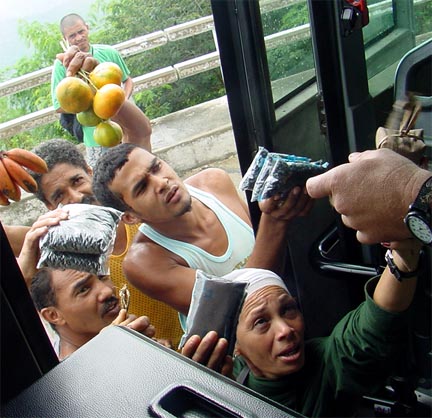Referred to as the Oriente by most Cubans, this region contrasts with the rest of the island in many ways. The racial mixture is slightly different due to the influx of Haitians in the late 1700s. This gives some cities, especially Santiago, a distinct Caribbean feel. Another distinctive feature is the lush green hills and mountains that rise above the humid plains. Eastern Cuba is a remote and wild paradise rarely explored by tourists.
Oriente is the birthplace of many revolutionary heroes as well as the starting point of both the war of independence and Fidel Castro's initial attack on the Moncada garrison in 1953. Castro later returned to Santiago in 1959 to accept surrender of Batista's army. When traveling the Eastern provinces you discover nearly every city has some type of memorial or revolutionary point of interest. Cubans are very proud of their independence and take great interest in preserving and showcasing revolutionary artifacts.
Geographically, the eastern portion of the island is dominated by the lush green Sierra Maestra Mountains, rising to over 1800 m (6,000 feet) — the highest peaks in Cuba.
First thing in the morning was spent viewing the amazing scene from our fortress hotel, El Castillo. then a short walk through the countryside brought us to a turnoff where we climbed a hill past homes peeking through the jungle to an impressive newly developed archaealogical site found inside a cave — Cueva del Pariso (Paradise Museum) . Leaving the cave past homes our return to the hotel was a walk through the town.
After climbing the stairs to El Castillo for the last time, we boarded our bus and headed for Santiago de Cuba by way of the La Farola road which winds its way through the mountains. Along the way we stopped for tangerine oranges and when we stopped at a lookout point we were barraged by a variety of entrepreneurs who materialized from nowhere. An interesting road - but don't get too close to the curb — drain grates aren't always in place. As we approached the coast we found we had left the tropical rain forest and we were approaching desert conditions by the time we stopped for some plantain. Our next stop was Guantanamo a town founded in 1796 to take in French fleeing from Haiti. It is now a Cuban military zone. Our last part of the trip was unevenful although I did manage to capture a great sky shot. Finally, as the sun was beginning to set, we arrived in Santiago de Cuba. Good thing! You don't want to be driving at night, as vehicle lights aren't manditory.
This evening we were treated to a Cuban home cooked dinner.
Websites of interest:

